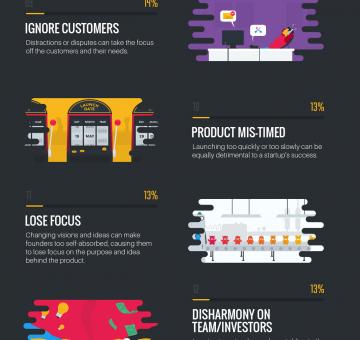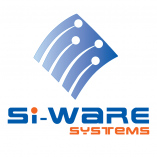Four Methods of Competitive Advantage

Why is it used?
Startups can use the competitive advantage tool to help them find higher value in their product, lower prices yet maintain quality and provide greater benefits and services.
How is it used?
Porter suggested that “generic” business strategies can be used in order to gain competitive advantage. Choosing strategies can be based on the scope of your activities (narrow vs. broad) also it depends on what extent do you want to differentiate your business. Porter identified 4 main competitive advantage methods that can be used to achieve a successful competitive advantage strategy.
Method 1: Cost Leadership
Cost leadership is one of the concepts that Porter developed, it basically means the lowest cost of operations in a specific industry. It is driven by the startup’s efficiency, scale, size, scope as well as its cumulative experience. Cost leadership aims to take advantage of the scale of production, the well defined scope, producing highly standardized products, the use of advanced technology and other economies.
Although cost leadership has a lot of benefits such as maintaining profits and expanding a company’s market share, and you might be lucky to achieve it all and win customers loyalty and higher profit margin, in some cases it can make it difficult for new startups to enter the market because of thin profit margins. Another disadvantage is that the technique can be copied by other companies and they can outperform your company easily.
Cost leadership does not work in every industry, so you need to study your industry as well as your target market. In addition to this sometimes it’s better for small business not to compete at all on price point if their market includes big competitors with a strong brand positioning.
Method 2: Differentiation
Differentiation is a commonly used strategy by businesses where startups often use to set themselves apart from competitors. In this strategy a commonly used factor is lowering costs; this may differentiate you from your competitors but not for so long. Therefore, when you want to differentiate yourself you need to look through the different attributes and define their importance and market them. This process can work through research to determine which things consumers find most important; and then you can use this as your uniqueness point and create a specific market for them.
Differentiation strategy can be a success or a failure; if you have a strong, confident corporate identity you can easily use it to pass along higher supplier costs to your customers because the lack of alternative products – this can only work if your customers are loyal to you. This method can be a failure as well since competitors can imitate your company’s style with a higher value. Thus this can put you at risk because consumer behavior can change and if the company doesn’t have sufficient customer demand to cover its higher costs, it may face a high loss.
Method 3: Defensive Strategy
This method is used when a new product is launched by your competitors, your company uses it to determine and defend its share in the market. If you are one of the leaders in your industry then some tactics and actions should be taken such as protecting their share, profit, product positioning and mind share against emerging competitors.
Defensive strategy applies to all industries; but you need to focus on your company’s competencies, and assets to defend your market share. Also think of your brand identity, your customer’s perception regarding your company. Next you can involve your brand positioning, improvement of features and pricing, as well as adding some marketing and sales tactics.
Defensive strategy can give your company an opportunity to enhance the value of its product and on the long term it can lessen the burden of feeling threatened all the time because you will have the chance to engage your old and new customers. On other hand, it can be a disadvantage if your company doesn’t know its target market or the reason why it is losing its market share. Also, when your tactics are not aligned with your long term strategy.
Method 4: Alliances Strategy
Alliance strategies are considered a key strategy of any company’s development. It’s a formal or informal partnership between two or more organizations in order to achieve their common goals and commitments etc… Alliance strategies are flexible which makes it very attractive to most businesses and markets as well as common.
There are 3 types of strategic alliances trading, functional and dynamic. Trading alliances are straightforward; it’s when buyers and sellers form some sort of agreement or arrangement based on contractual terms. Functional alliances integrate certain basic functions between two parties where they attain specific goals and establish ongoing management relationships. This alliance is then is converted into research improvement, project development, provide geographical market access and general enhancement.
As for the dynamic alliances, it involves the hidden assets of both parties such as skills, knowledge and capacity necessary to deliver results. And the only drawback in the dynamic alliances is that we don’t know what the exact assets that will be required because the structure of the alliance almost develop during negotiations and initial operations.
Alliances strategy is perfect for startups that don’t have enough resources because it lowers in risk and investment; it gives competences to your startup that it may lack. However, It’s not permanent, it has shorter life cycle, and can reduce competences and cover up weaknesses also it can be hard to manage especially with any changes that may occur.
Case Study:
Karla has a startup and she wanted to see where her competitive advantage is and see what she lacks and where can she improve. So she surfed the internet and started researching competitive advantage methods and saw which method will help her the most she started with cost leadership method and although it seems perfectly fine when she dug deeper she discovered that this method doesn’t fit her startup. Then she moved on to the second method (differentiation) and the third method (defensive strategies), but yet none of them were able to help her figure out what she wanted until she came across the fourth method ( Alliances) and she discovered that every aspect fits her a lot. She was finally able to figure out what she will do and from where she would start. Then she started utilizing her capacity and then she started moving fast to be able to place her product in the market.






































































EgyptInnovate site is not responsible for the content of the comments